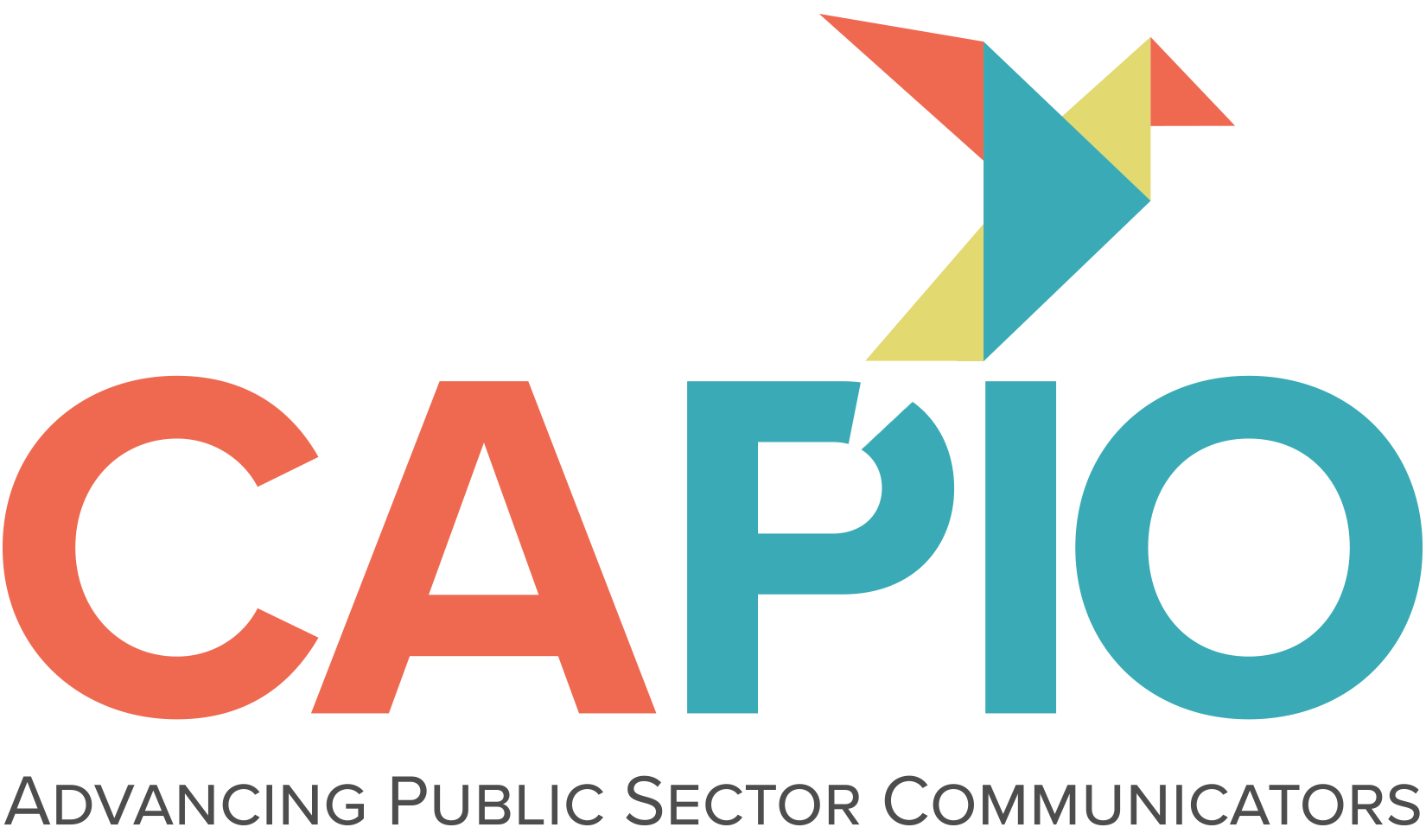Mastering the Art of Your Brand’s Impact: Tips and Tools for Elevating Your Agency’s Storytelling
By, Liselle DeGrave, APR, President/Owner, DeGrave
Communications, Inc.
Rachel Dickman, MBA, APR, Founder/CEO, RMG Communications
Mirinda Glick, Document Solutions Manager, County of
Placer
Kevin Strauss, Communications Division
Manager/PIO, Santa Clarita Valley Water Agency
Bonnie Woodrome, APR, Manager, Communications and External
Affairs, Western Riverside Council of Governments
At this year’s CAPIO Conference, we were thrilled by the overwhelming interest in branding and visual storytelling. For those who couldn’t attend our standing-room-only session, we’re excited to share key takeaways and additional insights on elevating your agency’s storytelling through strategic branding.
Successfully reinventing your agency’s brand involves more than just a new logo or tagline. It’s about building trust and credibility with your community. Survey your stakeholders early and often to ensure your branding aligns with their values and expectations. Engaging with the community can provide valuable insights into what resonates with them, helping your agency develop unique brand elements that distinguish it from others. Consistency across all materials fosters trust and reliability. Utilize branding standards to create recognizable and cohesive collateral.
Staying ahead of emerging graphic design and branding trends is essential for public-sector communicators. Due to decreasing attention spans, emphasize visuals over text, as visuals can convey messages quickly and effectively. Leverage the brain’s ability to process images faster than text to create impactful content. For example, infographics and short videos can be powerful tools for communicating complex information in an easily digestible format. Use images that reflect your audience’s diversity to ensure authenticity.
Inclusivity is essential in public-sector branding. Ensure your collateral is accessible to people with various abilities so everyone can engage with your message. To reach a broader audience, utilize best practices for published materials, including alt text for images, high-contrast typography, readable fonts, and straightforward language. The Web Content Accessibility Guidelines (WCAG) are an excellent resource for ensuring digital inclusivity.
Maintaining brand integrity across various platforms is vital. Consider all of the media and software used by your organization and how staff will utilize different brand elements. For example, choosing fonts and colors available on multiple platforms, such as Microsoft, Adobe, Canva, and your website, ensures your brand will look the same regardless of the software used. Before finalizing your brand elements, test them in several formats, such as digital, print, and even embroidery. Sometimes, your design will look great on screen but challenging to print, including vibrant orange or neon green colors. Ensuring consistency across several formats enhances your brand’s overall impact and professional appearance.
After testing and selecting your brand elements, document and diligently apply branding guidelines to ensure all materials accurately reflect your brand. Regular audits and reviews help maintain consistency and adherence to these guidelines, protecting the integrity of your brand. This consistency helps create a seamless experience for your audience, especially when working with multiple vendors or internal teams to create content. When it comes to branding, consistency builds trust.
Budget constraints are a common challenge in the public sector, but innovative, cost-effective branding solutions are available. Leverage existing strengths and resources to maximize impact, such as repurposing content and visuals across different platforms. Utilizing subject matter experts can enhance your efforts efficiently, ensuring quality output without high costs. Collaborating with partners can extend your reach and provide additional resources to amplify your message. For example, many public sector agencies have found success by partnering with local universities or nonprofit organizations to create mutually beneficial programs that serve as branding opportunities.
As you progress through your branding initiative, analyze challenges and the impact on your organization to refine future strategies. Reflecting on what didn’t work can provide valuable insights for improvement, helping you develop more effective branding approaches. For example, conducting post-campaign analyses can help identify areas for improvement and highlight successful tactics to replicate in future initiatives.
Measuring the impact of your branding efforts is critical to understanding effectiveness. Track metrics that align with your communication goals, such as public engagement and service delivery enhancements. Use analytics to gather data and inform future strategies, allowing you to adjust your approach based on what works best. For instance, monitoring social media engagement and website traffic can provide insights into which campaigns resonate with your audience. Reviewing these metrics helps refine your branding strategies to better meet your community’s needs.
By implementing these strategies, public-sector communicators can elevate their agency’s storytelling, ensuring their messages resonate and their brands thrive. Strategic branding is not just about creating a visual identity; it’s about building trust, fostering community engagement, and driving meaningful change. As we continue to navigate the evolving landscape of public-sector communication, these principles will serve as a foundation for creating impactful and enduring brands.

